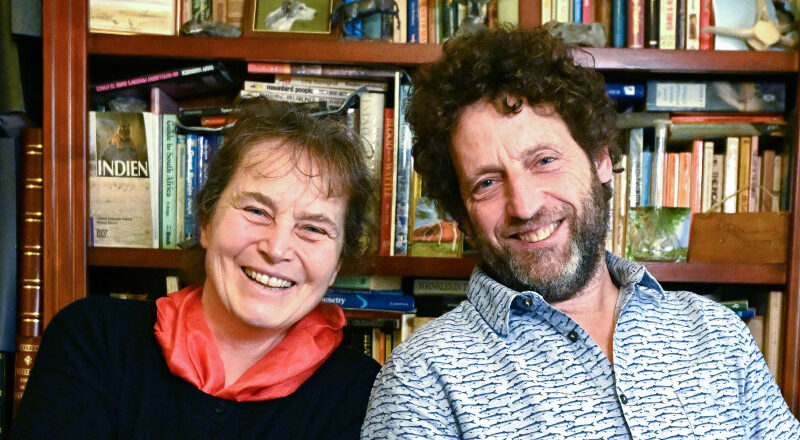How switching off cancer cells could help avoid ‘sledgehammer’ chemotherapy
Save articles for later
Add articles to your saved list and come back to them any time.
Key points
- Associate Professor Tim Thomas and Professor Anne Voss were awarded the 2023 Eureka Prize for Scientific Research on Wednesday night.
- The award recognises their contribution over three decades to a new way of treating cancer by targeting the overactive enzymes found in cancer cells.
- Early results from a clinical trial indicate KAT6 inhibiting drugs have been well tolerated by participants with breast, lung, or prostate cancer.
A couple whose pioneering research has spearheaded a new way to stop the spread of cancer cells have been awarded the 2023 Eureka Prize for Scientific Research.
Associate Professor Tim Thomas and Professor Anne Voss met in a German laboratory in the early 1990s, where they discovered a family of proteins that help genes create the correct type and number of cells, but can cause cancer if they become overactive.
Professor Anne Voss and Associate Professor Tim Thomas at home in Melbourne.Credit: Joe Armao
Almost 25 years later, they made another breakthrough: a drug that permanently switched off blood and liver cancer cells in mice. The results, published in Nature in 2018, attracted international attention and were picked up by pharmaceutical giant Pfizer, who began clinical trials for the new class of drugs called KAT6 inhibitors in December 2020.
By targeting a particular enzyme, the couple’s research team at Melbourne’s Walter and Eliza Hall Institute of Medical Research was able to avoid irreversible DNA damage, the cause of most side effects of cancer treatments such as chemotherapy.
Australian Museum director and chief executive Kim McKay said Thomas and Voss’ perseverance over three decades had particularly impressed the judging panel of Australian and international experts.
“It just goes to show – great science takes a long time,” she said. “This is groundbreaking, world-leading science being done here in Australia.”
‘This is groundbreaking, world-leading science being done here in Australia.’
Voss said the award was a recognition of the effort of many scientists who had worked on the project over more than 12 years, while Thomas hoped it would help sustain the momentum needed to get their research from the laboratory to the cancer clinic.
“I’ve talked to a lot of people who have cancer, and they’re really appreciative of the effort, but they understand that for them, it’s going to be too late,” he said. “Those were tough, tough conversations to have, and for me, the real prize will be if it goes into the clinic and helps people.”
Finding new cancer treatments has been an all-consuming pursuit for Thomas and Voss, whose son once banned them from discussing science at the dinner table.
“You don’t turn off easily,” Voss said. “You have to make a conscious decision to say, ‘This is now our leisure time’, and do something else.”
Early results from the clinical trial, presented at a conference in the United States in June, showed the drug was well tolerated by participants with breast, lung, or prostate cancer, and associated with strong suppression of the targeted enzyme in blood cells and tumours.
Associate Professor Nial Wheate, an expert in oncology medicine at the University of Sydney, said he expected the drug to have significantly fewer side effects than current treatments for cancer, but stressed it still had a long way to go before joining the 5 per cent of oncology drugs that make it through the clinical trial stage.
“Treatments like chemotherapy are like a sledgehammer to everything in the body because they can’t recognise cancer cells from normal cells,” he said. “If successful, it will leave those normal cells intact and help us attack those cancers that are really hard to treat, particularly ovarian and lung cancer.”
The Morning Edition newsletter is our guide to the day’s most important and interesting stories, analysis and insights. Sign up here.
Most Viewed in National
From our partners
Source: Read Full Article


